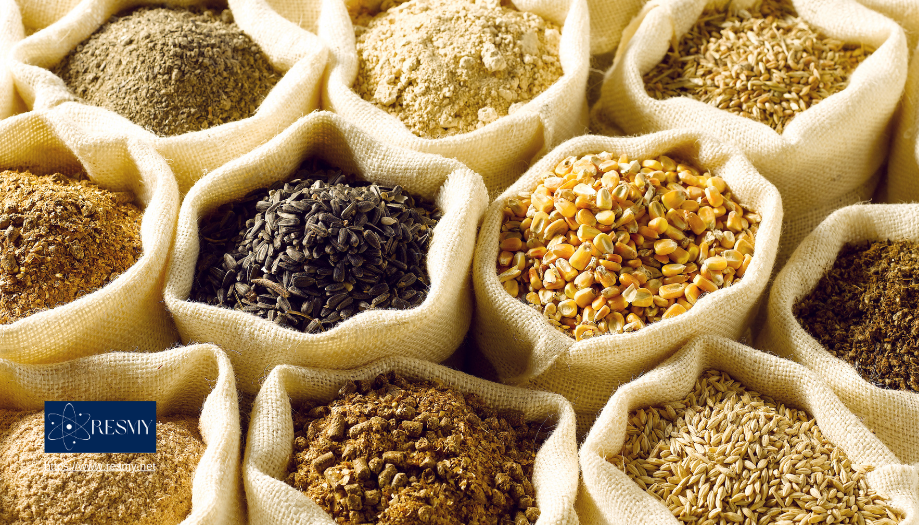Distilled grain waste (DGW), a byproduct of the alcohol distillation process, is abundant in nutrients, making it a potential resource for animal feed. However, one significant challenge hampers its utilization: the high lignin content, which can reach up to 14%. Lignin, a complex organic polymer found in plant cell walls, significantly reduces the feeding value of DGW due to its indigestibility. To address this, researchers have turned to an innovative approach involving the use of white-rot fungi and microbial inoculums, unlocking the potential of DGW as a valuable feed resource.
The Challenge of Lignin in DGW
Lignin’s presence in DGW poses a major obstacle for its use as animal feed. It is known for its resistance to degradation, making it difficult for animals to digest and absorb the nutrients in DGW effectively. Traditionally, the white-rot fungus Pleurotus ostreatus (oyster mushroom) is recognized for its ability to degrade lignin efficiently. However, the lignin derivatives produced during the alcohol distillation process inhibit the growth of P. ostreatus, rendering this natural solution less effective.
The Microbial Solution
A breakthrough came when researchers identified three dominant indigenous bacteria: Sphingobacterium thermophilum X1, Pseudoxanthomonas byssovorax X3, and Bacillus velezensis 15F. These bacteria were selected to create single and compound microbial inoculums for DGW composting. The goal was to prepare substrates that would facilitate the growth of P. ostreatus.
Comparative Analysis and Results
In a comparative study, DGW was treated with different inoculums: a control with no inoculation, single microbial inoculums, and compound inoculums involving all three bacteria. The results were promising. All composite inoculations, particularly the three-microbial compound, demonstrated superior outcomes compared to the non-inoculated control and single microbial treatments. These outcomes included faster organic metabolism, a shorter composting process, and improved physicochemical properties of DGW.
Optimizing Conditions for P. ostreatus Growth
The growth assays for P. ostreatus revealed remarkable results when using DGW composted with the three-microbial compound inoculation. The assays showed:
- Faster Mycelial Colonization: The mycelial colonization rate was the fastest at 20.43 μg·g−1 ergosterol.
- Rapid Mycelial Extension: The extension rate reached 9 mm/d.
- High Ligninolytic Enzyme Activities: The activities of ligninolytic enzymes such as laccase (Lac), lignin peroxidase (Lip), manganese peroxidase (MnP), xylanase, and filter paperase (FPase) were significantly higher.
- Effective Lignin Degradation: The lignin degradation ratio was 30.77% after just 12 hours of composting.
Metagenomic Analysis and Feed Value
Metagenomic analysis of the DGW sample treated with the three-microbial compound inoculation indicated a rich presence of bacteria involved in amino acid, carbohydrate, and energy metabolism, as well as xenobiotic biodegradation. This microbial diversity and activity played a crucial role in the transformation of DGW into a high-quality substrate for P. ostreatus growth.
The analysis of the feed value revealed that full colonization by P. ostreatus mycelia in composted DGW led to:
- High Fiber Content Retention: Ensuring the roughage necessary for cattle digestion.
- Decreased Lignin Content: Reducing from 14% to 5%, making the DGW more digestible.
- Elevated Protein Concentrations: Increasing to about 130 g·kg−1 DM (dry matter).
Impact on Cattle Growth
The practical implications of this research were tested in cattle feeding experiments. By replacing 60% of regular feed with composted DGW treated with P. ostreatus, cattle showed an additional daily weight gain of 0.4 kg. This significant improvement underscores the potential of this method to enhance cattle growth and health.
Conclusion
The study demonstrates that a compound inoculant consisting of Sphingobacterium thermophilum X1, Pseudoxanthomonas byssovorax X3, and Bacillus velezensis 15F is highly effective in composting DGW and promoting the growth of Pleurotus ostreatus. The ability of P. ostreatus to decrease the lignin content during its mycelial growth process significantly improves the quality of DGW as a feed resource for cattle.
This innovative approach not only addresses the challenge of high lignin content in DGW but also provides a sustainable solution for recycling waste from the alcohol distillation process. By transforming DGW into a valuable animal feed, this method contributes to reducing waste, enhancing agricultural productivity, and promoting a circular economy in the agricultural sector.
As this research continues to evolve, it holds the promise of broader applications, potentially benefiting other types of livestock and contributing to global food security. The integration of microbial inoculums and fungal biotechnology presents a forward-thinking strategy that could revolutionize the way agricultural waste is managed and utilized, paving the way for more sustainable and efficient farming practices.
Other Topics: Medicine and Health Science, Natural Science, Agricultural Science, Engineering & Technology, Social Sciences & Humanities

